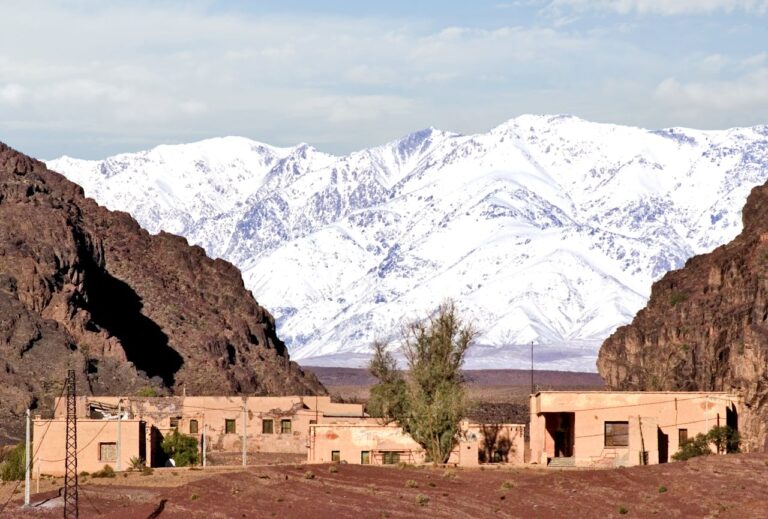Morocco Weather Guide
Morocco, a land of diverse landscapes and rich cultural heritage, is known for its unique weather patterns that vary across the country. Whether you’re planning to explore the golden dunes of the Sahara Desert, the vibrant streets of Marrakech, or the serene coastal towns, understanding Morocco’s weather is essential for a memorable journey. This guide provides a detailed overview of Morocco’s weather, helping you plan your visit to this enchanting country.
The Geography of Morocco
Morocco’s geographical diversity significantly influences its weather. Situated in North Africa, Morocco is bordered by the Atlantic Ocean to the west, the Mediterranean Sea to the north, and the vast Sahara Desert to the south and east. The Atlas Mountains run through the country, creating distinct climatic zones. This geographical layout results in varied weather conditions, ranging from Mediterranean in the north to arid desert climates in the south.
Seasonal Weather Patterns
Spring (March to May)
Spring is one of the best times to visit Morocco, as the weather is mild and pleasant. During these months, temperatures range from 15°C (59°F) to 25°C (77°F) in most regions. The landscapes come alive with blooming flowers, making it an ideal time for outdoor activities like hiking in the Atlas Mountains or exploring the lush valleys.
Summer (June to August)
Summer in Morocco can be quite hot, especially in inland areas and the desert. Temperatures in cities like Marrakech and Fez can soar above 40°C (104°F). Coastal areas such as Casablanca and Essaouira enjoy cooler temperatures due to the Atlantic breeze. Travelers heading to the Sahara Desert should prepare for extreme heat during the day and cooler nights.
Autumn (September to November)
Autumn is another favorable season to visit Morocco. The intense summer heat subsides, and temperatures become more moderate, ranging from 20°C (68°F) to 30°C (86°F). This season is perfect for exploring historic sites, trekking, and enjoying Morocco’s natural beauty.
Winter (December to February)
Winter in Morocco varies depending on the region. Coastal cities experience mild and wet winters, with temperatures around 10°C (50°F) to 18°C (64°F). The Atlas Mountains see snowfall, making them a popular destination for skiing and snowboarding. Desert areas remain relatively warm during the day but can get quite cold at night.
Regional Weather Highlights
Marrakech
Marrakech, located in central Morocco, experiences a semi-arid climate. Summers are scorching, with temperatures often exceeding 40°C (104°F), while winters are mild, averaging around 12°C (54°F). Spring and autumn are the best times to visit, offering comfortable weather for exploring the city’s historic medina and vibrant souks.
Casablanca
As a coastal city, Casablanca enjoys a Mediterranean climate with mild, wet winters and warm, dry summers. The city’s average temperatures range from 8°C (46°F) in winter to 27°C (81°F) in summer. Its coastal location ensures a refreshing sea breeze throughout the year.
Sahara Desert
The Sahara Desert experiences an extreme desert climate with scorching summers and cooler winters. Daytime temperatures can reach up to 50°C (122°F) in summer, while winter nights can drop to near freezing. The best time to visit the Sahara is during spring or autumn when the weather is more tolerable.
Atlas Mountains
The Atlas Mountains showcase a diverse range of weather conditions. The High Atlas experiences cold, snowy winters and mild summers, making it a great destination for trekking in spring and summer. The Middle and Anti-Atlas regions are drier and warmer, ideal for exploring year-round.
Essaouira
Essaouira, a coastal town, enjoys a temperate climate influenced by the Atlantic Ocean. Summers are cool, with temperatures rarely exceeding 25°C (77°F), while winters remain mild, averaging around 15°C (59°F). The constant wind makes Essaouira a popular spot for windsurfing and kitesurfing.
Unique Weather Phenomena
Morocco’s diverse climate gives rise to unique weather phenomena:
- Sirocco Winds: These hot, dry winds from the Sahara can cause sudden temperature spikes, particularly in spring and summer.
- Fog and Mist: Coastal areas like Casablanca and Tangier often experience fog and mist in the early morning, especially during cooler months.
- Snowfall: The High Atlas Mountains receive significant snowfall in winter, transforming the region into a winter sports haven.
Best Time to Visit Morocco
The ideal time to visit Morocco depends on your planned activities and destinations:
- Spring and Autumn: Perfect for overall travel, with moderate temperatures and vibrant landscapes.
- Summer: Best for coastal destinations and those accustomed to hot weather.
- Winter: Ideal for skiing in the Atlas Mountains and exploring the desert without extreme heat.
Packing Tips for Morocco’s Weather
- Layered Clothing: Essential for adapting to temperature fluctuations between day and night.
- Sun Protection: Sunscreen, hats, and sunglasses are a must, especially in summer.
- Warm Gear: Necessary for winter visits to the mountains and desert.
- Comfortable Shoes: Ideal for walking and trekking in diverse terrains.
Understanding Morocco’s weather is crucial for planning a successful trip. With its diverse climates and stunning landscapes, Morocco offers something for every traveler. By considering the seasonal and regional variations, you can make the most of your journey to this captivating country.






